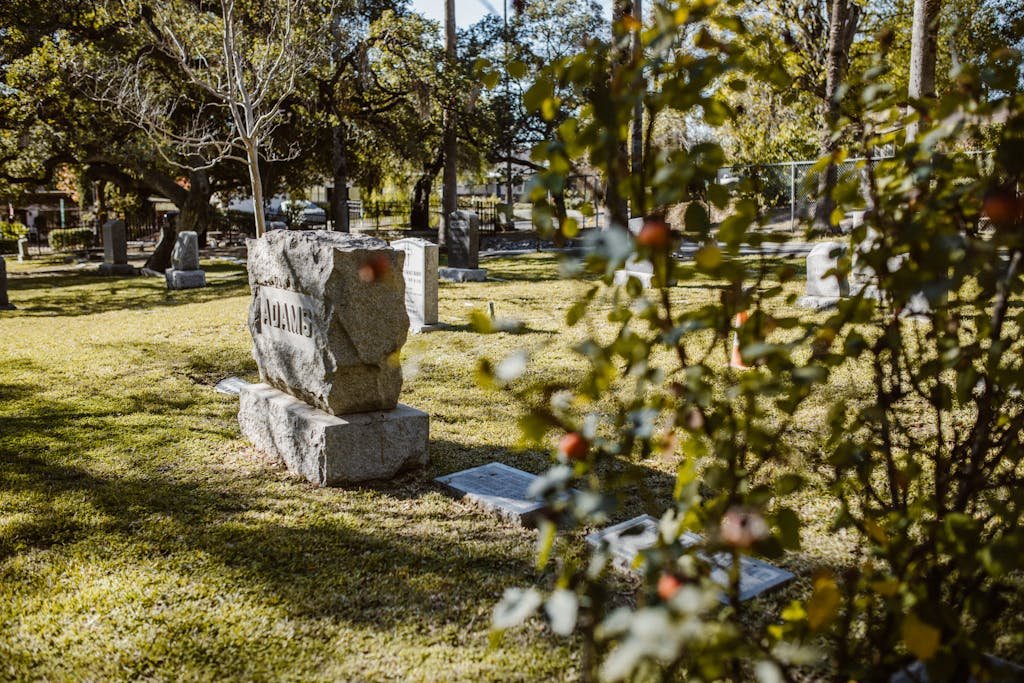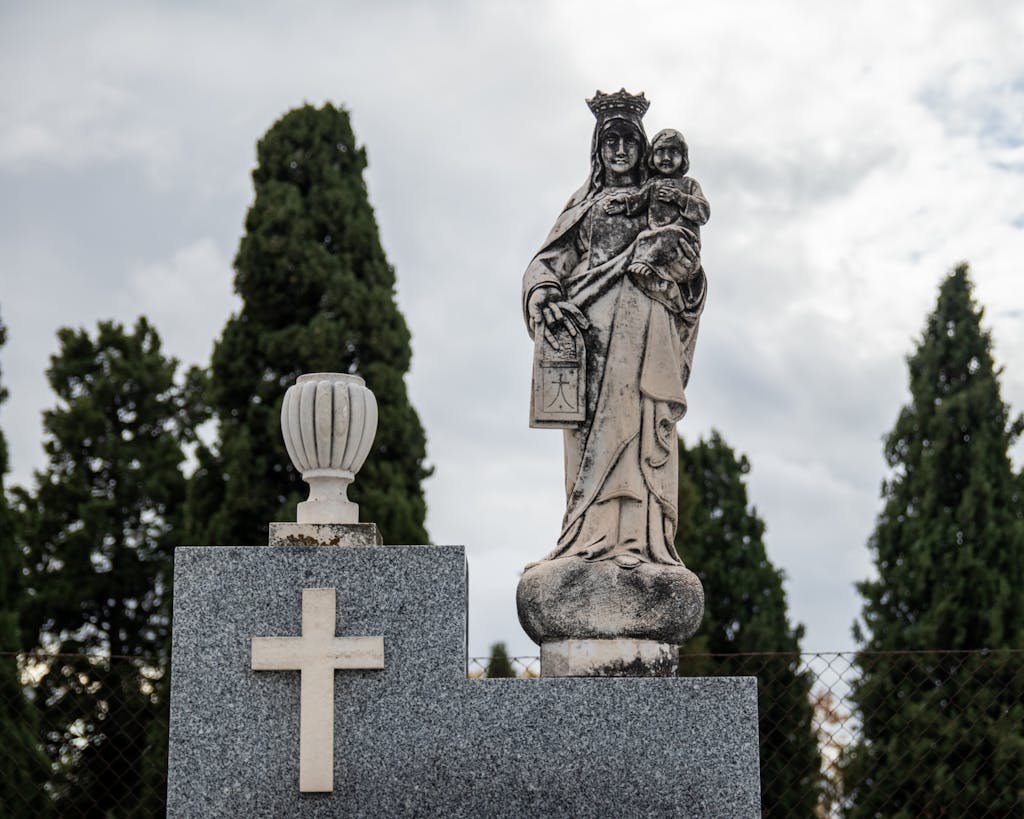Do You Have to Be Embalmed?
When arranging funeral services, many families are told that embalming is necessary or even required by law. This leads to an important question: do you have to be embalmed? The answer surprises most people because the funeral industry sometimes presents embalming as mandatory when it’s actually optional in the vast majority of situations.
Embalming—the process of temporarily preserving a body using chemical solutions—serves specific purposes and can be valuable in certain circumstances. However, understanding when it’s truly necessary versus when it’s simply customary helps families make informed decisions that align with their values, budget, and religious beliefs.
The Short Answer: Do you have to be embalmed? No, embalming is NOT required by federal law and is rarely required by state law. The main exceptions are when transporting bodies across state lines, when there’s a significant delay before burial or cremation, or when certain communicable diseases are present. Most families can legally skip embalming.

The Truth About Embalming Requirements
Federal Law: No Embalming Requirement
The Federal Trade Commission’s Funeral Rule explicitly states that embalming is not required except in certain special cases. Funeral homes must:
- Disclose that embalming is not required by law (except in specific circumstances)
- Not falsely state that embalming is required
- Obtain permission before embalming
- Not charge for unauthorized embalming
- Provide pricing information before embalming
These federal protections ensure families aren’t pressured into unnecessary embalming under false claims of legal requirements.
State Laws Vary But Rarely Require Embalming
While states regulate funeral practices, very few mandate embalming:
States with NO Embalming Requirements: The vast majority of states have no laws requiring embalming for standard burial or cremation.
Limited State Requirements: A few states require embalming or refrigeration only in specific circumstances:
- After a certain time period (typically 24-72 hours)
- For certain communicable diseases
- When crossing state lines
Even these requirements usually offer refrigeration as an alternative to embalming.
When Embalming IS Required
Interstate Transport: Most states require embalming when bodies are transported across state lines, particularly by common carrier (airlines, trains). However, sealed containers sometimes serve as alternatives.
Extended Delay Before Disposition: Some states mandate preservation (embalming or refrigeration) if burial/cremation won’t occur within 24-72 hours. The specific timeframe varies by state.
Certain Communicable Diseases: States may require embalming for deaths from certain infectious diseases, though this is increasingly rare as modern understanding shows embalming doesn’t prevent disease transmission effectively.
Public Viewing Requirements: Some states require embalming if there will be public viewing after a certain time period. Private family viewing typically doesn’t trigger this requirement.
Foreign Transport: Shipping bodies internationally almost always requires embalming due to transportation duration and foreign country requirements.
The key point: outside these specific scenarios, embalming is optional and purely a family choice.
When Funeral Homes Can Require Embalming
While laws rarely mandate embalming, funeral homes can set their own policies:
Funeral Home Requirements
For Viewing/Visitation: Many funeral homes require embalming if families want:
- Open casket viewing
- Visitation longer than a few hours
- Delay of more than 24 hours before viewing
This is funeral home policy, not law. Other funeral homes may allow viewing without embalming under certain conditions (refrigeration, shorter timeframes, immediate family only).
Their Facility, Their Rules: Funeral homes can establish requirements for using their facilities and services. However, they must:
- Clearly disclose these requirements
- Explain they’re policies, not laws
- Offer alternatives when possible
Shop Around: If one funeral home requires embalming and you prefer to avoid it, other funeral homes in your area may have different policies. Rules for visiting cemeteries vary by location, and funeral home policies vary similarly.
Cemetery Requirements
Cemeteries rarely require embalming, but occasionally have related requirements:
Burial Vaults: Many cemeteries require burial vaults (concrete or metal containers for caskets), but these are unrelated to embalming. You can bury unembalmed bodies in vaults.
Timing Restrictions: Some cemeteries have policies about how quickly burial must occur, which might indirectly necessitate embalming if natural decomposition creates issues before burial can be scheduled.
Green Burial Grounds: Natural burial cemeteries typically prohibit embalming as it contradicts environmental principles. Can you be buried without a casket often pairs with no-embalming natural burial practices.
Religious and Cultural Perspectives on Embalming
Many religious traditions have strong preferences regarding embalming:
Religions That Prohibit or Discourage Embalming
Judaism: Jewish law generally prohibits embalming except when legally required. Orthodox and Conservative traditions require prompt burial (within 24 hours when possible) without embalming. Reform Judaism is more flexible but still typically avoids embalming.
Islam: Islamic law prohibits embalming except when legally mandated for transportation. Bodies should be buried as quickly as possible (within 24 hours) without chemical preservation. Simple washing and shrouding suffices.
Baha’i Faith: Discourages embalming unless required by law or if burial will be significantly delayed. Prefers burial within one hour’s travel of place of death.
Eastern Orthodox Christianity: Generally opposes embalming, preferring natural preparation. Some Orthodox churches permit it but don’t encourage it.
Some Buddhist Traditions: Certain Buddhist traditions discourage embalming as interfering with the natural transition of the spirit, though practices vary widely.
Religions That Accept or Require Embalming
Catholicism: The Catholic Church allows embalming and has no prohibition. Many Catholic families choose embalming for traditional wake/viewing practices, though it’s not required by church doctrine.
Most Protestant Denominations: Generally neutral on embalming. Families choose based on personal preference, viewing desires, and practical considerations.
Hinduism: Traditionally cremates quickly without embalming, though practices vary by community and circumstances.
Latter-day Saints (Mormon): Permits embalming and many members choose it for viewing purposes, though it’s not religiously required.
Understanding your religious community’s teachings helps inform decisions about embalming that align with faith traditions.

Alternatives to Embalming
Several options preserve bodies temporarily without embalming:
Refrigeration
How It Works: Bodies are kept at 35-40°F, significantly slowing decomposition without chemicals.
Duration Effective: Several days to over a week, depending on circumstances.
Cost: $50-$100 per day, far less than embalming ($500-$1,000 one-time cost).
When Appropriate:
- Short delays before burial/cremation
- Religious restrictions on embalming
- Budget constraints
- Environmental concerns about formaldehyde
Availability: Most funeral homes and hospitals have refrigeration facilities.
Dry Ice
How It Works: Dry ice (frozen carbon dioxide) placed around the body maintains cold temperature, slowing decomposition.
Duration Effective: 24-48 hours with regular dry ice replenishment.
Cost: $50-$100 for sufficient dry ice supply.
When Appropriate:
- Home funerals or home vigils
- Very short timeframes before burial
- When funeral home refrigeration unavailable
- Religious or cultural practices involving home care
Considerations:
- Requires careful handling (dry ice is extremely cold)
- Needs regular replenishment
- Proper ventilation important (CO2 buildup)
- Not suitable for extended periods
Ice Packs/Cooling Blankets
How It Works: Ice packs or special cooling blankets placed on and around the body maintain low temperature.
Duration Effective: 12-24 hours with regular replacement.
Cost: $20-$50 for ice/cooling supplies.
When Appropriate:
- Very short term (overnight)
- Home wakes or vigils
- Religious communities handling their own death care
Limitations: Less effective than refrigeration or dry ice for extended preservation.
Prompt Burial/Cremation
The Original Method: For most of human history, bodies were buried/cremated within 24-48 hours without chemical preservation.
Modern Application: Direct burial or cremation within 1-3 days eliminates need for preservation entirely.
Religious Alignment: Many traditions (Jewish, Muslim, some Buddhist) prefer prompt disposition without embalming.
Practical Considerations:
- Requires quick decision-making
- May limit time for distant family to arrive
- Some families find pace stressful during grief
How much does it cost to be buried decreases significantly when eliminating embalming and choosing prompt burial.
The Embalming Process: What It Actually Does
Understanding embalming helps inform whether it’s right for your situation:
What Embalming Involves
Arterial Embalming:
- Blood is drained from arteries
- Embalming fluid (primarily formaldehyde) is injected through arterial system
- Fluid circulates throughout body, temporarily preserving tissues
Cavity Embalming:
- Internal organs are treated separately
- Fluid aspirated from body cavities
- Stronger preservative chemicals injected into chest and abdominal cavities
Topical Treatment:
- External features treated
- Cosmetics applied if needed
Time Required: 2-4 hours for complete embalming process.
What Embalming Accomplishes
Temporary Preservation:
- Slows decomposition for 1-2 weeks typically
- Allows viewing several days after death
- Provides time for family gathering
Important Limitation: Embalming is TEMPORARY preservation, not permanent. Even embalmed bodies decompose, just more slowly.
Cosmetic Benefits:
- Provides more natural appearance for viewing
- Reduces discoloration
- Maintains facial features
Sanitation:
- Reduces odors associated with decomposition
- Creates cleaner environment for viewing
- Note: Modern understanding shows embalming doesn’t prevent disease transmission effectively
What Embalming Does NOT Do
Not Permanent Preservation: Embalming doesn’t preserve bodies indefinitely. After burial, decomposition continues, just at slower initial rate.
Not Disease Prevention: Contrary to historical belief, embalming doesn’t effectively prevent disease spread. Universal precautions (gloves, proper handling) protect funeral workers and families, not embalming.
Not Legally Required: Despite what some funeral homes suggest, it’s rarely legally mandated.
Not Environmentally Friendly: Formaldehyde and other embalming chemicals leach into soil and groundwater, creating environmental concerns.
Environmental and Health Concerns
Environmental Impact of Embalming
Formaldehyde Concerns:
- Primary embalming chemical is formaldehyde (known carcinogen)
- Approximately 800,000 gallons used annually in US burials
- Leaches into groundwater and soil after burial
- Toxic to aquatic life and ecosystems
Other Chemicals:
- Methanol, ethanol, and other solvents
- Dyes and cosmetic chemicals
- All eventually enter environment
Green Burial Movement: Growing environmental awareness drives families toward no-embalming options. What happens to graves after 100 years includes consideration of long-term chemical impacts in soil.
Occupational Health Risks
Funeral Industry Workers:
- Regular formaldehyde exposure
- Increased cancer risks documented
- Respiratory issues
- Skin sensitization
OSHA Regulations: Strict workplace safety rules govern funeral home embalming rooms to protect workers, including ventilation requirements, protective equipment, and exposure limits.
Safer Alternatives Emerging:
Formaldehyde-Free Embalming: Some funeral homes now offer formaldehyde-free embalming using plant-based preservatives:
- Essential oils and natural compounds
- Less toxic but also less effective long-term
- More expensive than traditional embalming
- Growing availability
When Embalming Makes Sense
Despite concerns, embalming serves legitimate purposes in certain situations:
Extended Time Before Services
When Family Needs Time:
- Distant relatives traveling from abroad
- Coordinating schedules across multiple time zones
- Allowing more people to pay respects
Duration: If services will occur 5+ days after death, embalming or refrigeration becomes more important.
Traditional Viewings
Open Casket Presentation:
- Many families find viewing provides closure
- Traditional in some cultures
- Embalming provides better cosmetic results for viewing
Funeral Home Requirements: Some funeral homes require embalming for any public viewing as facility policy.
Traumatic Death or Autopsy
Restorative Work: When death involved trauma or required autopsy, embalming allows restorative work:
- Surgical reconstruction
- Cosmetic restoration
- Creating viewable presentation
Family Comfort: Skilled embalming and restoration can provide families with more peaceful final memories.
Long-Distance Transportation
Interstate or International: When bodies must be transported long distances:
- Airlines often require embalming
- Long transport times necessitate preservation
- Destination countries may mandate it
Personal Preference
Cultural Traditions: Some families simply prefer embalming based on cultural norms or personal comfort with the practice.
Peace of Mind: Some people find embalming provides psychological comfort even when not technically necessary.
These are valid reasons for choosing embalming—the key is making informed, voluntary choices rather than believing it’s required when it’s not.
Cost Considerations
Embalming Costs
Standard Embalming: $500-$1,000 Varies by funeral home and region.
Complicated Cases: $800-$1,500 Trauma, autopsy, or extensive restorative work increases costs.
Additional Costs Often Bundled:
- Body preparation: $200-$500
- Cosmetics: Included or $100-$300
- Dressing and casing: $100-$300
Total Package: $800-$2,100
Cost Savings by Skipping Embalming
Direct Savings: $500-$1,000 (embalming fee)
Indirect Savings:
- Less expensive casket acceptable (no viewing concerns)
- Shorter funeral home facility use
- Faster timeline may reduce facility fees
Alternative Costs: If using refrigeration instead: $50-$100/day for 3-5 days = $150-$500 Net savings vs. embalming: $200-$650
What is the cheapest way to be buried almost always involves skipping embalming.
Viewing Without Embalming
Many families want viewing but prefer avoiding embalming:
Private Family Viewing
Immediate Viewing: Within hours of death, before significant decomposition:
- No preservation needed
- Refrigeration maintains condition
- Brief, private family time
Short-Term Refrigeration: Bodies kept cold remain viewable for several days:
- Natural appearance
- Minimal cosmetic work needed
- Intimate family viewing settings
Considerations:
- Body appears more natural (sleeping appearance)
- Shorter viewing windows
- Funeral home may limit viewing duration
Closed Casket Memorial
Photo Displays:
- Professional photos on display
- Video tributes
- Memory boards
Focus on Life:
- Celebration of life rather than body viewing
- Many find this approach meaningful
- Reduces pressure for perfect presentation
Cultural Acceptance: Increasingly common, especially among younger generations and certain religious communities.
State-by-State Variations
While most states don’t require embalming, specific regulations vary:
Minimal Regulations: Most states simply require disposition within reasonable timeframe (3-10 days) but specify no preservation method.
Preservation Required After Time Period: Some states mandate embalming OR refrigeration after:
- 24 hours: Alaska, Arizona
- 48 hours: Georgia
- 72 hours: Several states
Key: These states offer refrigeration alternative, making embalming still optional.
Communicable Disease Requirements: Few states maintain embalming requirements for certain diseases, though this is increasingly rare.
No Specific Requirements: Many states have no embalming requirements whatsoever under any circumstance (other than interstate transport following federal guidelines).
Research Your State: Check state funeral board or health department regulations for specifics. Funeral directors must know and follow state requirements.
Making Your Decision
Questions to Ask Yourself
Do you want viewing?
- If yes, how long after death?
- Public or private family only?
- Open or closed casket?
What’s your timeline?
- Burial/cremation within 2-3 days?
- Need week or more for family gathering?
Religious considerations?
- Does your faith prohibit embalming?
- Are there traditional practices to honor?
Environmental values?
- Concerned about formaldehyde in environment?
- Prefer green burial approach?
Budget constraints?
- Is $500-$1,000 embalming cost difficult?
- Would refrigeration alternative work?
Questions to Ask Funeral Homes
“Is embalming legally required in our situation?” Should be clear no unless special circumstances.
“What are alternatives to embalming?” Reputable funeral homes offer refrigeration and explain options.
“What are your facility policies regarding viewing without embalming?” Understand their specific requirements.
“What’s the cost difference between embalming and refrigeration?” Get specific pricing.
“If we choose no embalming, what’s the recommended timeline?” Understand practical limitations.
Cremation vs burial cost comparison shows cremation typically doesn’t require embalming either, providing another option.
Common Questions About Embalming Requirements
Can you have a funeral without embalming?
Yes, absolutely. Funeral services, memorial services, and celebrations of life can all occur without embalming. Closed casket services eliminate any need for preservation.
How long can a body be kept without embalming?
Refrigerated bodies remain viewable and suitable for burial for 1-2 weeks or longer. Unrefrigerated bodies should be buried within 24-48 hours in most climates.
Is embalming required for cremation?
No. Embalming before cremation serves no purpose since the body will be cremated. Some funeral homes require it for viewing before cremation, but this is policy, not law.
What if you want an open casket?
Many funeral homes allow short-term viewing without embalming if body is refrigerated and viewing occurs within a few days. Some require embalming for any open casket as facility policy.
Does embalming preserve the body forever?
No. Embalming provides temporary preservation (1-2 weeks optimal viewing). After burial, decomposition continues, though initially more slowly than unembalmed bodies. How deep are graves affects decomposition rate more than embalming does long-term.
Can funeral homes embalm without permission?
No. Federal law requires informed consent before embalming except in limited circumstances. Unauthorized embalming is illegal, and you cannot be charged for it.
What happens if you don’t embalm?
Natural decomposition begins immediately after death and continues. Refrigeration slows this process significantly. Prompt burial or cremation eliminates concerns about decomposition timing. How long does it take to get a headstone after death extends beyond burial, so embalming doesn’t affect memorial timing.
The Bottom Line on Embalming
Do you have to be embalmed? In the vast majority of situations, no. Embalming is not required by federal law and rarely required by state law. It’s a choice that makes sense in specific circumstances—extended delays before services, traditional viewing preferences, long-distance transportation, or personal preference—but it’s not mandatory for most funerals.
Understanding your legal rights, religious teachings, practical alternatives, and the environmental and health concerns surrounding embalming empowers you to make informed decisions. Whether you choose embalming or not, the choice should be yours, based on accurate information rather than false claims of legal necessity.
Simple, dignified funerals occur every day without embalming. Refrigeration, prompt disposition, closed casket services, and celebration of life memorials all provide meaningful ways to honor loved ones without chemical preservation. How long to wait before placing a headstone on a grave depends on ground settling, not embalming status.
The funeral industry has normalized embalming over the past century, but it remains optional. Knowing this gives you freedom to choose practices that align with your values, budget, religious beliefs, and environmental concerns. Whether you select embalming or alternatives, make the choice consciously and confidently, knowing you’re exercising your legal rights while honoring your loved one in ways that feel right for your family.

Pingback: Green Burial: What It Is and How Natural Burial Works 2025
Pingback: What to Bring When Visiting a Grave: Complete Checklist